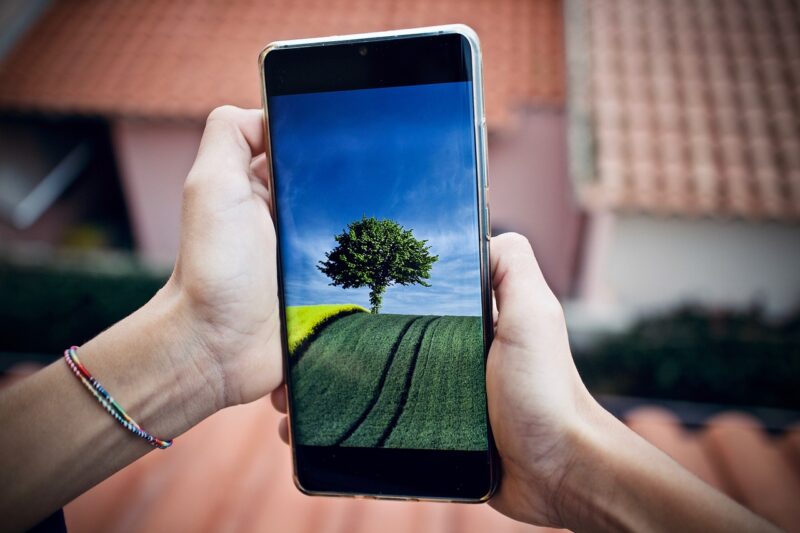How Early Mobile Phones Set the Stage for the Digital Revolution
November 13, 2024

The advent of mobile phones marked a significant turning point in the way we communicate, shifting the paradigm from landlines to portable, personal communication devices. As technology advanced, early mobile phones, characterized by their bulky designs and limited functionalities, laid the groundwork for the rich digital landscape we navigate today. This article will explore the evolution of early mobile phones, their socio-economic impact, and their foundational role in initiating the digital revolution.
1. The Birth of Mobile Communication
Mobile phone technology has its roots in the mid-20th century, particularly with the development of radio communications, which offered the prospect of wireless communication over distances.
In 1973, Martin Cooper, a Motorola executive, made the first-ever mobile phone call using the DynaTAC 8000X, a device weighing nearly 2.5 pounds and measuring 10 inches long. This call not only marked a milestone in telecommunications but also embodied the aspirations of a new age in communication.
The DynaTAC’s release in 1983 was the first commercial mobile phone available to the public, revolutionizing personal communication by providing freedom from the tether of landlines. However, due to its functionality and high cost (over $3,000), widespread adoption was limited in the initial years.
2. Technological Advancements and User Experience
The early mobile phones primarily functioned for voice communication, lacking the sophisticated features of today’s devices. As technology progressed, second-generation (2G) phones emerged in the 1990s, introducing digital voice transmission, improved battery life, and SMS capabilities.
By making text messaging a standard feature, 2G phones heightened the convenience of mobile communications, laying the groundwork for digital interactions. The introduction of Global System for Mobile Communications (GSM) technology facilitated roaming services and interoperability across different networks, enhancing user experiences.
The increased accessibility and affordability of mobile phones fueled demand, leading to a dramatic increase in global mobile subscriptions. This growth transformed them from luxury items into essential tools for daily communication.
3. The Impact on Society and Commerce
Early mobile phones began to bridge the geographical divide, enabling people to connect regardless of location. This connectivity fostered significant changes in society and commerce, promoting the onset of a more mobile workforce and the rise of remote working.
As businesses adapted to this new means of communication, mobile phones became vital tools for effective business operations. Companies began investing in mobile technology to gain a competitive edge, updating marketing strategies to include mobile outreach and customer engagement, setting the stage for mobile commerce (m-commerce).
Furthermore, the growing familiarity with mobile technology increased the public’s readiness for future digital innovations, thus bolstering the push toward a more interconnected digital economy.
4. Transition to Smartphones and the Digital Explosion
The late 2000s ushered in a new era of mobile technology with the introduction of smartphones, notably Apple’s iPhone in 2007. Combining communication, computing, and internet capabilities, smartphones revolutionized how individuals and businesses interacted, heralding a digital explosion.
With the advent of mobile applications and the proliferation of mobile internet access, industries experienced a seismic shift. Tasks that once required multiple devices or steps could now be handled seamlessly within a single device. Businesses began harnessing the power of mobile apps to connect with users, offering services and products at their fingertips.
As smartphones became widely adopted, the concept of mobile connectivity evolved, influencing nearly every facet of modern society, from social interactions to online banking. This integration created an ecology where technology and everyday life coalesced, resulting in an unprecedented era of convenience and information access.
5. Conclusion: Foundations of the Digital Revolution
In retrospect, early mobile phones were far more than mere gadgets; they were instrumental in reshaping the world as we know it. Through iterative technological advancements, early devices sparked a cascade of changes that led to the digital revolution.
As we explore today’s ultra-connected world boasting artificial intelligence, social media, and ubiquitous internet, it’s essential to recognize the fundamental place early mobile communications held in this journey. The future of mobile technology will continue to evolve and innovate, perpetuating the legacy of those first, groundbreaking devices.
By reflecting on the journey from those first clunky phones to today’s sleek smartphones, we can appreciate how far we’ve come and imagine how much further we can go in this rapidly advancing technological landscape.








